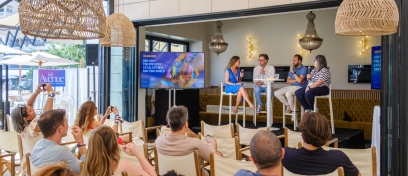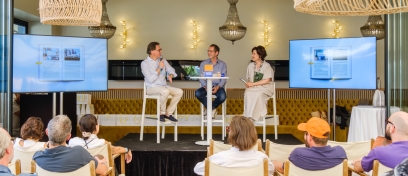Gen Z and Advertising: It’s Complicated…

Gen Z prefer traditional ad formats, especially OOH
WPP’s data, research and consulting division Kantar Millward Brown recently published a global study focusing on the attitudes of different generations towards advertising, with a focus on Gen Z (16-19-year-olds).The study revealed that the favourite media ad formats among Generation Z are all traditional media. In fact, OOH tops the list with 55% having a positive perception of the format, followed by Cinema (53%) and Magazines (51%). Interestingly, the data highlights that traditional media have higher ratings than all other digital media advertising, no matter whether it is display, search, desktop or mobile.
Gen Z ad preferences do not reflect their habits
Admittedly, the slightly older generations Gen Y (20-34-year-olds) and X (35-49-year-olds) also prefer traditional media ad formats so on this point, Gen Z do not differ from their elders. However, the key difference is that unlike Gen Y and Z, Gen X did not grow up with tablets and mobiles. Consequently, the favourite ad formats among Gen X are newspapers (55%) and magazines (56%) - ie the most popular media of their formative years.Interesting trends emerge when we look at media preferences among Gen Z and apply the same parameters. These young audiences have grown up with digital platforms and they love online; ¾ of them spend over an hour per day on the internet, both on desktop and mobile. But only a third of them like online ads. Furthermore, Gen Z put more effort into avoiding online ads:
- 70% skip ads - vs 66% Gen Y and 62% Gen X
- 52% use ad blockers - vs 50% Gen Y and 41% Gen X
The mobile-life blend
To understand Gen Z relationship with online advertising we first need to understand their relationship with online, and especially with their mobiles.Although all generations tend to spend more than an hour per day online, Gen Z spend additional time online via their smartphone and they are heavier social media users. The smartphone is a natural part of life among Gen Z consumers.
- 63% use Facebook several times a day
- 66% use YouTube
- 36% use Instagram
“The role of my phone would be best described as my life-line. […] It's basically everything I need to keep up on social, educational, and environmental cues on a day-to-day basis”.- US respondent
Heavy mobile use does not equal branding favourability
Naturally, as heavy online and smartphone users, Gen Z like to have control of what they see, like, follow and share on social media. They do not want brands telling them what to look at or what to buy, and they are careful about which brands or products they allow to be part of their community. Therefore, brands are not always welcome when jumping in with an ad, they must do it right.Why people avoid online ads
Traditional advertising draws people in
Considering the values of Gen Z when it comes to advertising (ie they demand respect for their privacy) naturally, traditional ads are perceived better among these consumers as they do not interrupt their activities.
Traditional ad formats benefit from the position, which allows engaging brand communication to draw people into a story.
The study shows how OOH holds the unique position within the media landscape where it is not perceived as being invasive in people’s lives, their activities or the content that they are exploring. On the contrary, they find it an interesting distraction. With Gen Z, the medium offers brands a valuable opportunity to confidently communicate with a receptive and engaged audience who are rather choosy about their other ad consumption and build a long-term relationship with an increasingly valuable consumer.
“Ads outdoors are well designed and attractive. It’s a relaxing moment to see these ads while waiting for [a] bus or someone.”China respondent



